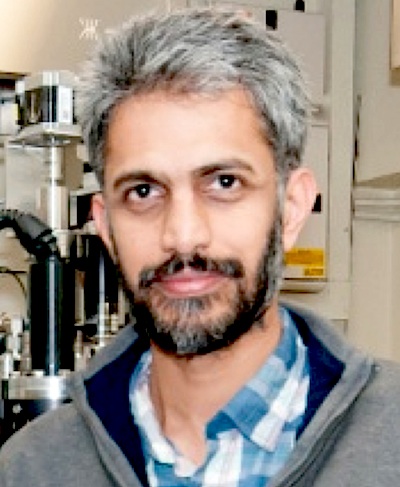Cambridge 7th to 9th September

Presenting Author:
Gin Jose
<G.Jose@leeds.ac.uk>
article posted 01 Apr 2015
Gin Jose
Prof. Jose's research interests are in the areas of photonic glasses, femtosecond pulsed laser deposition and plasma implantation, planar waveguide devices on glass and silicon platforms, and photonic biosensors. He is co-founder of two spin out companies from Leeds, Glucosense Diagnostics Ltd and Ultramatis Ltd. The ultrafast laser plasma implantation (ULPI) process in glass that he invented has been the driving force behind these spin out companies. He is also leading a £5.2 million EPSRC functional materials manufacturing research project for developing ULPI for application in integrated photonics and as a major manufacturing process. Glasses functionalised using ULPI are attractive for non-invasive biosensing, integrated photonics, anti-counterfeiting/printing in glass bottles and toughening of glass for displays. A number of industrial partners are involved in these research and development activities of his group.
Prof. Jose received his MSc and PhD degrees in Physics from University of Calicut, India and Mahatma Gandhi University, India. He was a research fellow at Dipartimento di Fisica, Politecnico di Milano, Italy during 2001-2002. In 2003 he joined the Department of Physics, Indian Institute of Technology Guwahati and was a Senior Lecturer/Assistant Professor there during 2004-2007. In 2007, he moved to the Institute for Materials Research, University of Leeds, UK as Senior Research Fellow and Project Manager, and since March 2013 he is the Professor and Chair in Functional Materials there.

Highly dense rare-earth silicates by femtosecond laser generated plasma processing
Jayakrishnan Chandrappan1, Matthew Murray1, Tarun Kakkar1, D.P.Steenson2, Animesh Jha1, Gin Jose1
Rare-earth solubility limitations in silica glass are preventing the development of low cost photo-luminescent glasses suitable for a wide range of applications including optical communication and sensing. Here we report a novel method to overcome the chemical solubility limitation of silica using femtosecond (fs) laser induced plasma. Rare-earth (Erbium/Ytterbium) doped tellurite (tellurium-zinc-sodium) glass compositions were prepared by conventional glass melting and quenching process. The silica substrate to be doped with rare-earth ions was maintained at a temperature of 973K using a resistive heater inside the vacuum chamber. The tellurite glass targets were ablated using 100fs pulsed laser, in oxygen atmosphere, to produce plasma; nearly stoichiometric formations of atoms and ions of the target glass. These highly energetic ions initiate an interfacial reaction at 973K with the silica surface, resulting in the formation of a well-defined metastable homogeneous rare-earth doped tellurite modified layer of silica, which is comparable with the chemical structure of alkali containing silicate glass. Such a level of composition modification, unveiled by the X-ray photoelectron spectroscopy (XPS) technique, is thermodynamically unstable via melting and other conventional glass fabrication methods. This amorphous structure can hold significantly higher concentrations of RE, 2.8 at.%, without clustering. Moreover, the photo-luminescent studies indicate the spectroscopic characteristics of Er3+ ions, corresponding to the intra-4f 4I13/2 -> 4I15/2, similar to that observed in erbium doped silicate glasses.
Institutions:
1. Institute for Materials Research, School of Chemical and Process Engineering, Faculty of Engineering, University of Leeds, LS2 9JT, UK E-mail: pmcj@leeds.ac.uk
2. Institute of Microwave and photonics, Electronic and Electrical Engineering, Faculty of Engineering, University of Leeds, LS2 9JT, UK
